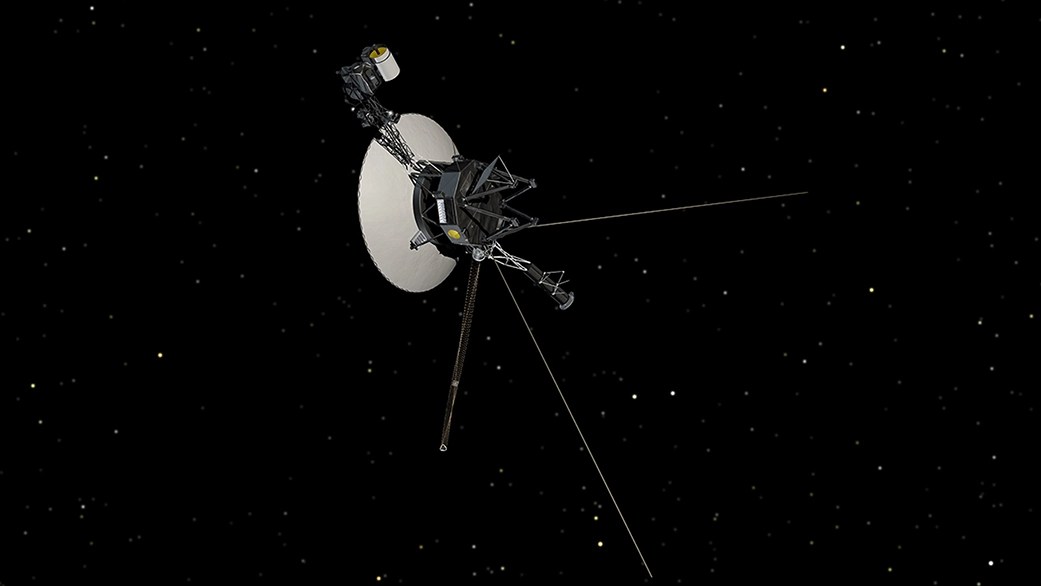Saturn: Exploration
Four robotic spacecraft have visited Saturn. NASA's Pioneer 11 provided the first close look in September 1979. NASA's twin Voyager 1 and Voyager 2 spacecraft followed up with flybys nine months apart in 1980 and 1981.
Each flyby revealed intriguing details about the ringed giant world, but it wasn't until the international Cassini mission arrived in orbit in 2004 that our understanding of Saturn really started to take shape. Cassini studied Saturn from orbit for 13 years before its human engineers on Earth transformed it into an atmospheric probe for its spectacular final plunge into the planet in September 2017. Cassini also carried ESA's Huygens Probe, which landed on Saturn's moon Titan in 2005.
From Earth, astronomers have studied Saturn with telescopes for centuries. And the Hubble Space Telescope continues to uncover new details from its perch in Earth orbit.
Significant Events
- ~700 BCE: The oldest written records documenting Saturn are attributed to the Assyrians. They described the ringed planet as a sparkle in the night and named it "Star of Ninib."
- ~400 BCE: Ancient Greek astronomers name what they think is a wandering star in honor of Kronos, the god of agriculture. The Romans later change the name to Saturn, their god of agriculture.
- July 1610: Galileo Galilei spots Saturn's rings through a telescope, but mistakes them for a "triple planet."
- 1655: Christiaan Huygens discovers Saturn's rings and its largest moon, Titan.
- 1675: Italian-born astronomer Jean-Dominique Cassini discovers a "division" between what are now called the A and B rings.
- Sept. 1, 1979: Pioneer 11 is the first spacecraft to reach Saturn. Among Pioneer 11's many discoveries are Saturn's F ring and a new moon.
- 1980 and 1981: In its 1980 flyby of Saturn, Voyager 1 reveals the intricate structure of the ring system, consisting of thousands of ringlets. Flying even closer to Saturn in 1981, Voyager 2 provides more detailed images and documents the thinness of some of the rings.
- July 1, 2004: NASA's Cassini spacecraft becomes the first to orbit Saturn, beginning a decade-long mission that revealed many secrets and surprises about Saturn and its system of rings and moons.
- Jan. 14, 2005: The European Space Agency's Huygens probe is the first spacecraft to make a soft landing on the surface of another planet's moon — Saturn's giant moon Titan. The probe provides the first direct study of Titan's atmosphere and the first-and-only direct images of Titan's surface, which is shrouded by thick
- Sept. 17, 2006: Scientists discover a new ring. The ring coincides with the orbits of Saturn's moons Janus and Epimetheus. Images taken during a solar occultation that backlit the planet revealed the new ring.
- 2009: NASA’s Spitzer Space Telescope reveals the presence of a gigantic, low density ring associated with Saturn’s distant moon Phoebe.
- Sep. 15, 2017: Cassini ends a 13-year orbital mission with a spectacular, planned plunge into Saturn’s atmosphere – sending science data back to the last second. Cassini’s final five orbits enable scientists to directly sample Saturn’s atmosphere for the first time
Missions to Saturn


Voyager 1
The twin Voyagers launched in 1977 to visit Jupiter and Saturn, and never stopped.


Cassini
For more than a decade, Cassini shared the wonders of Saturn and its family of icy moons.





